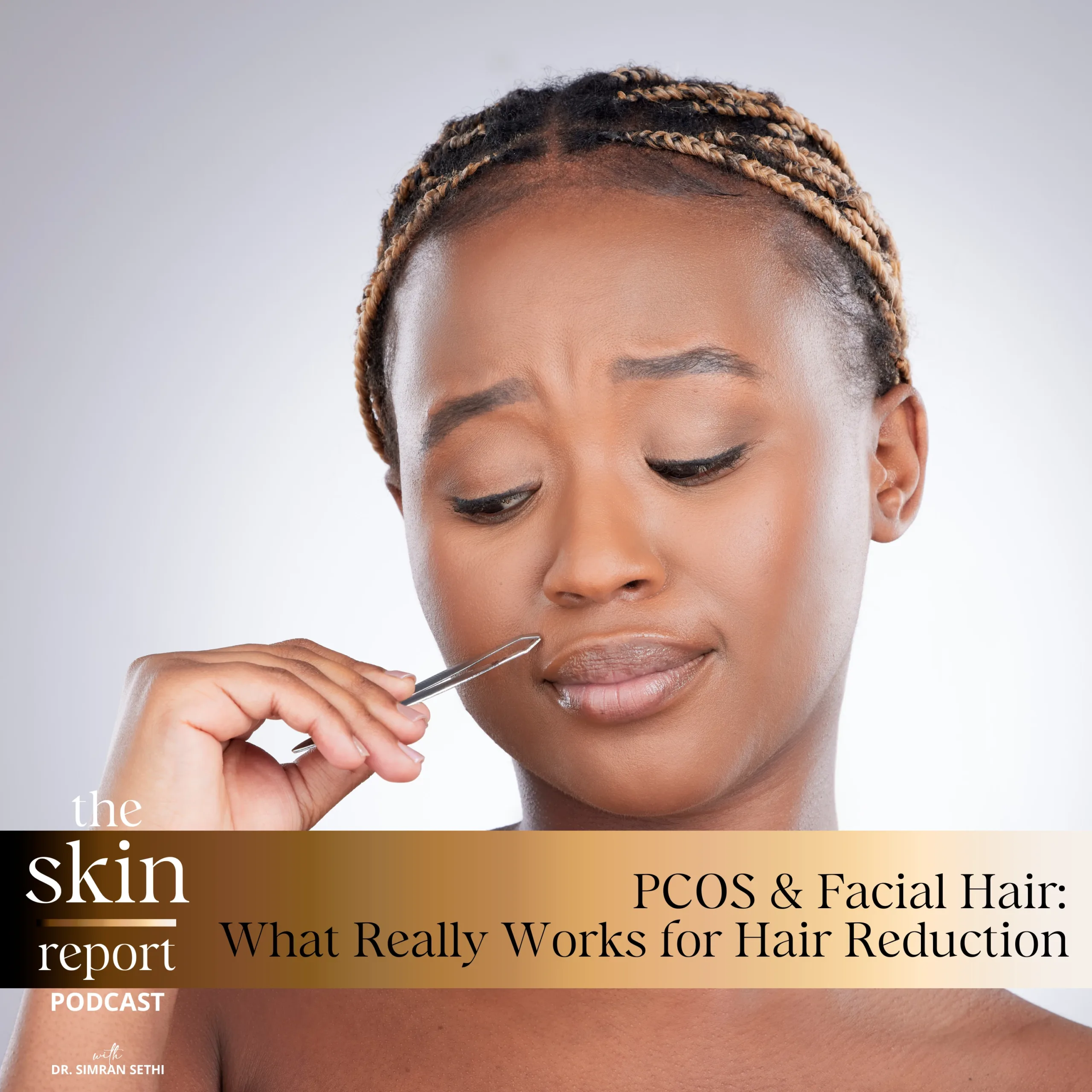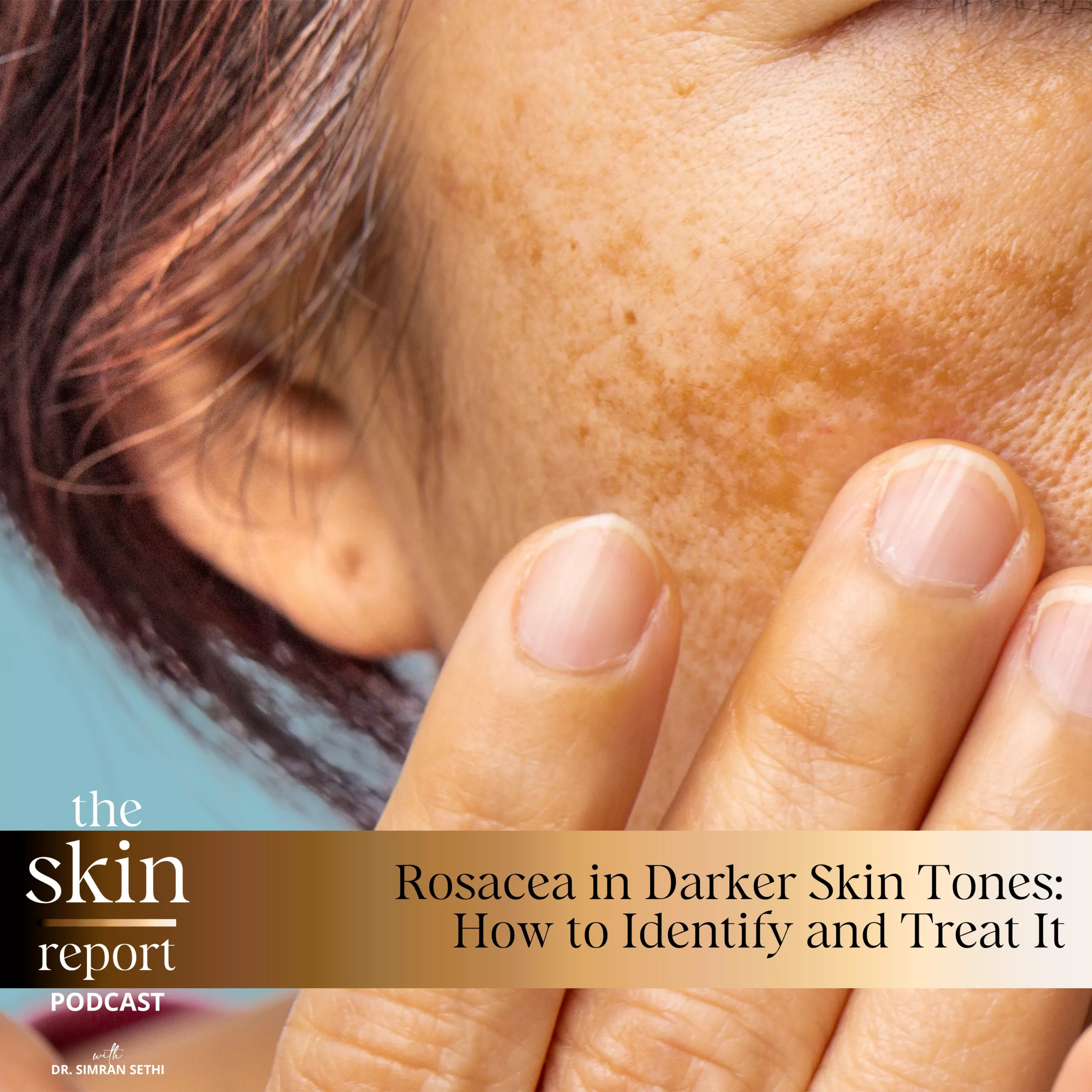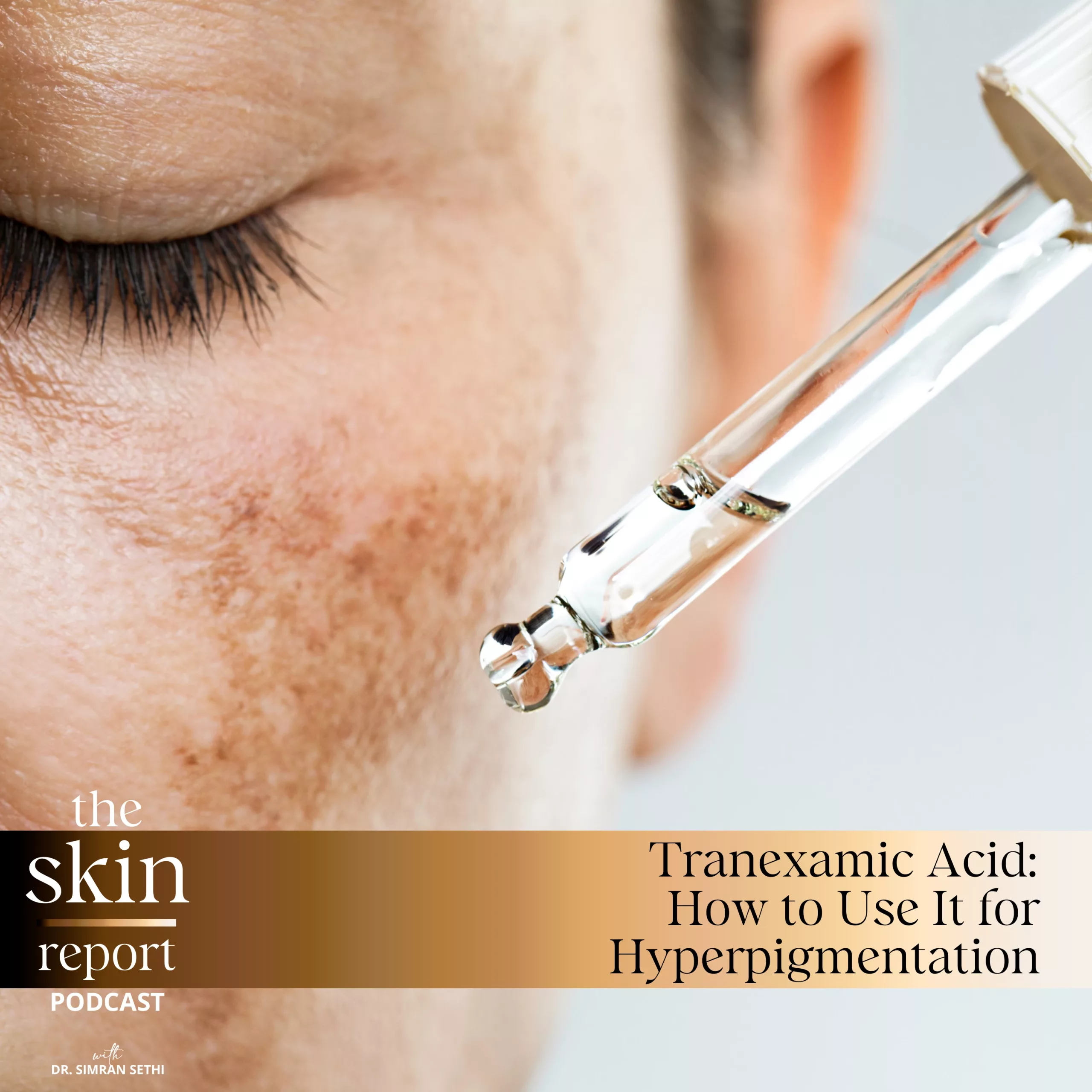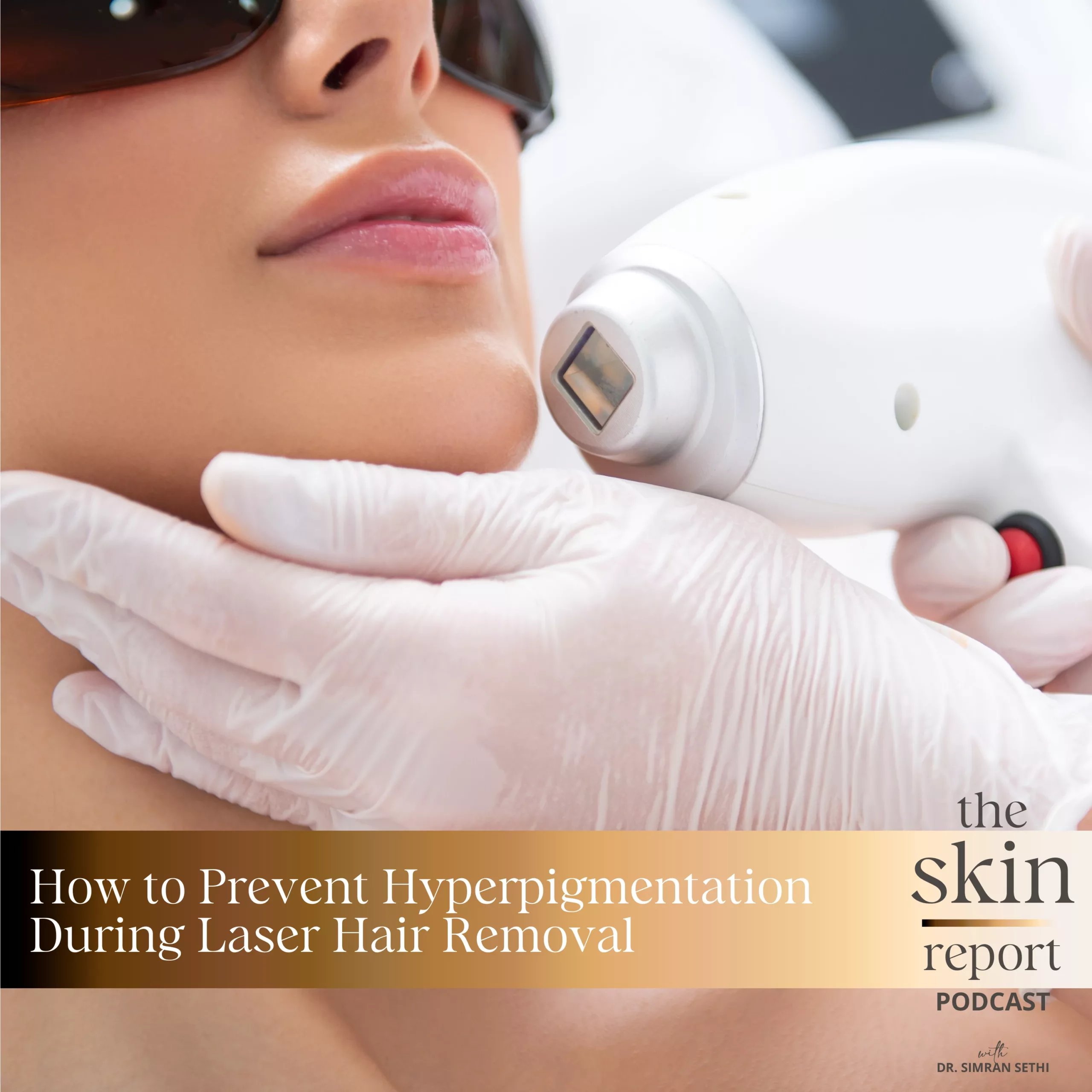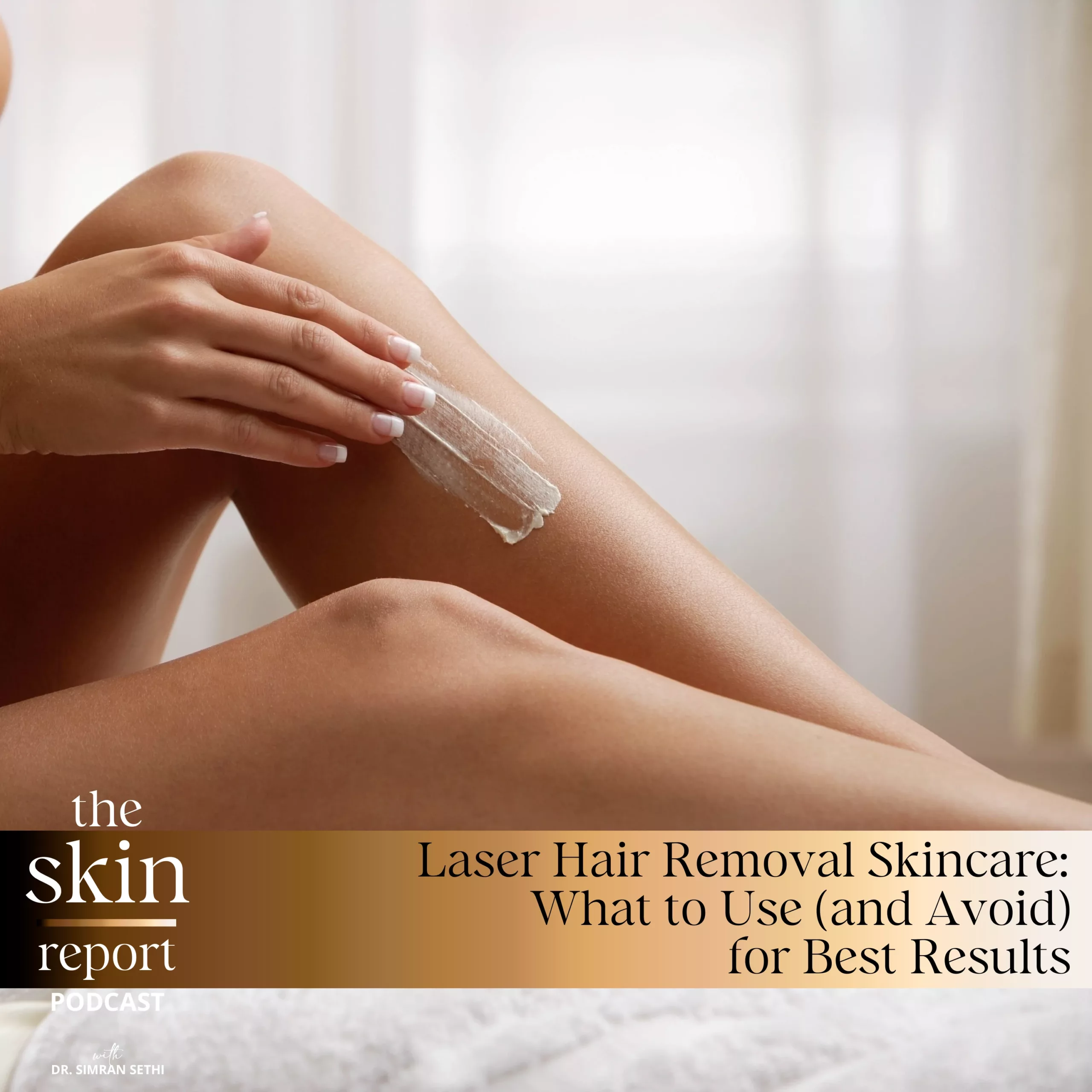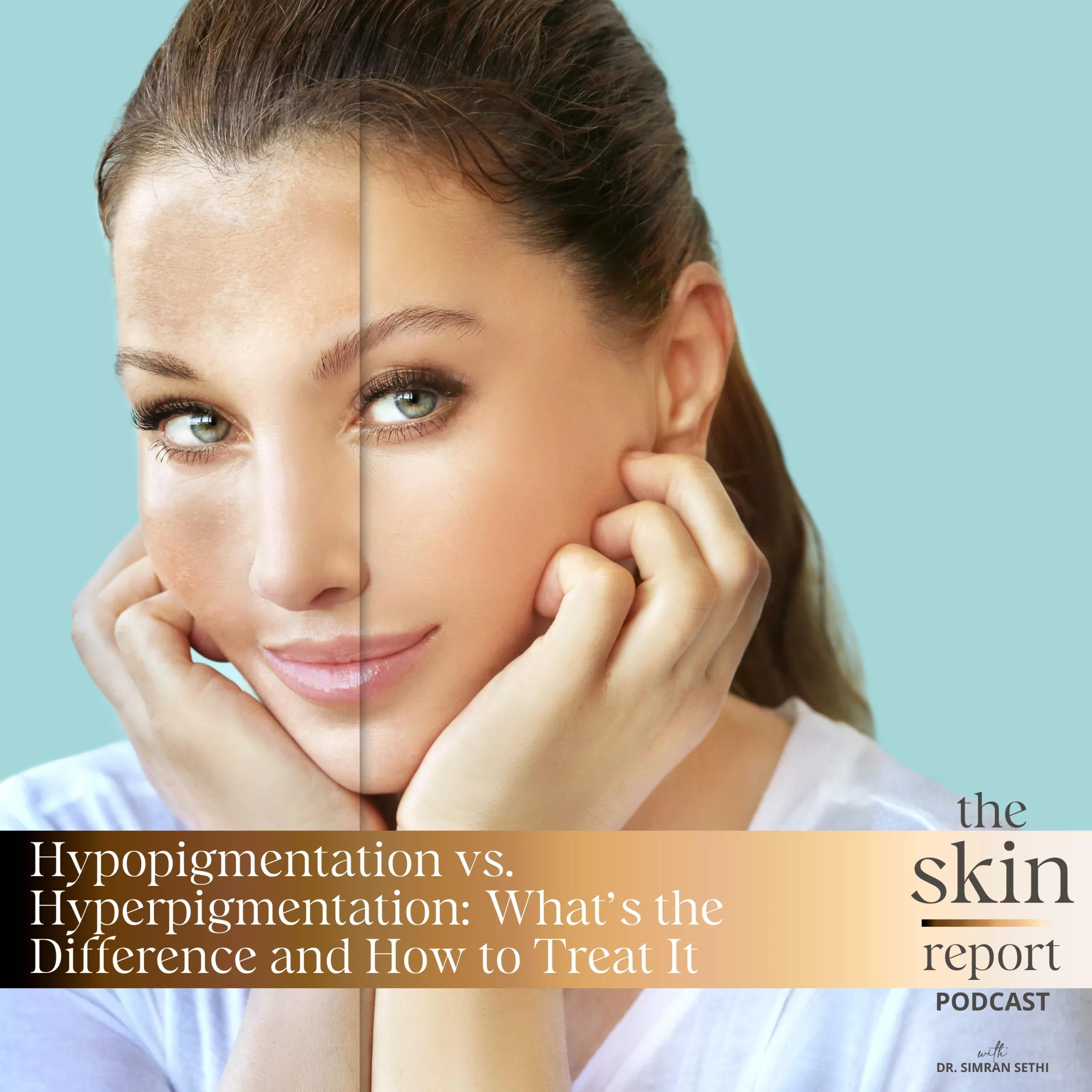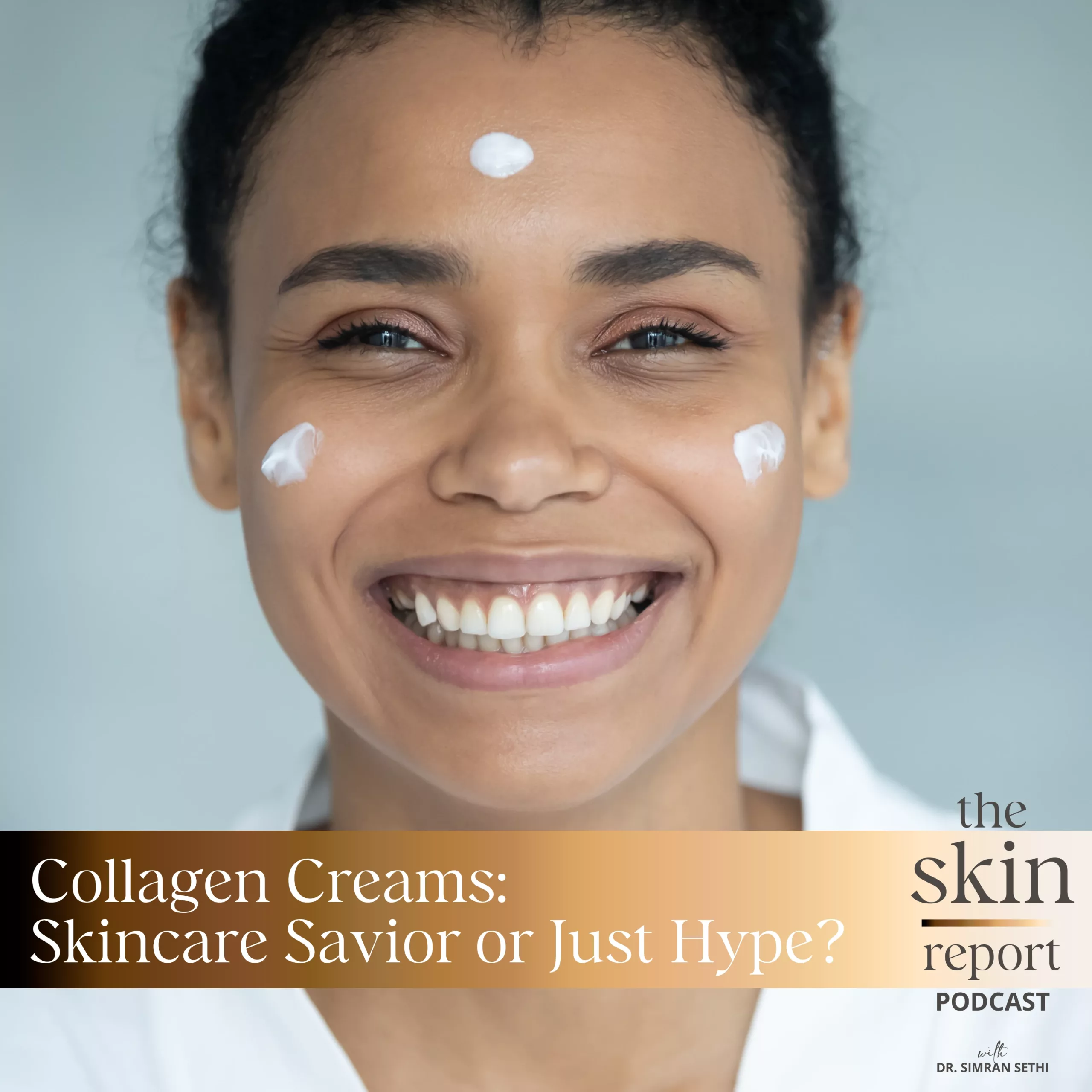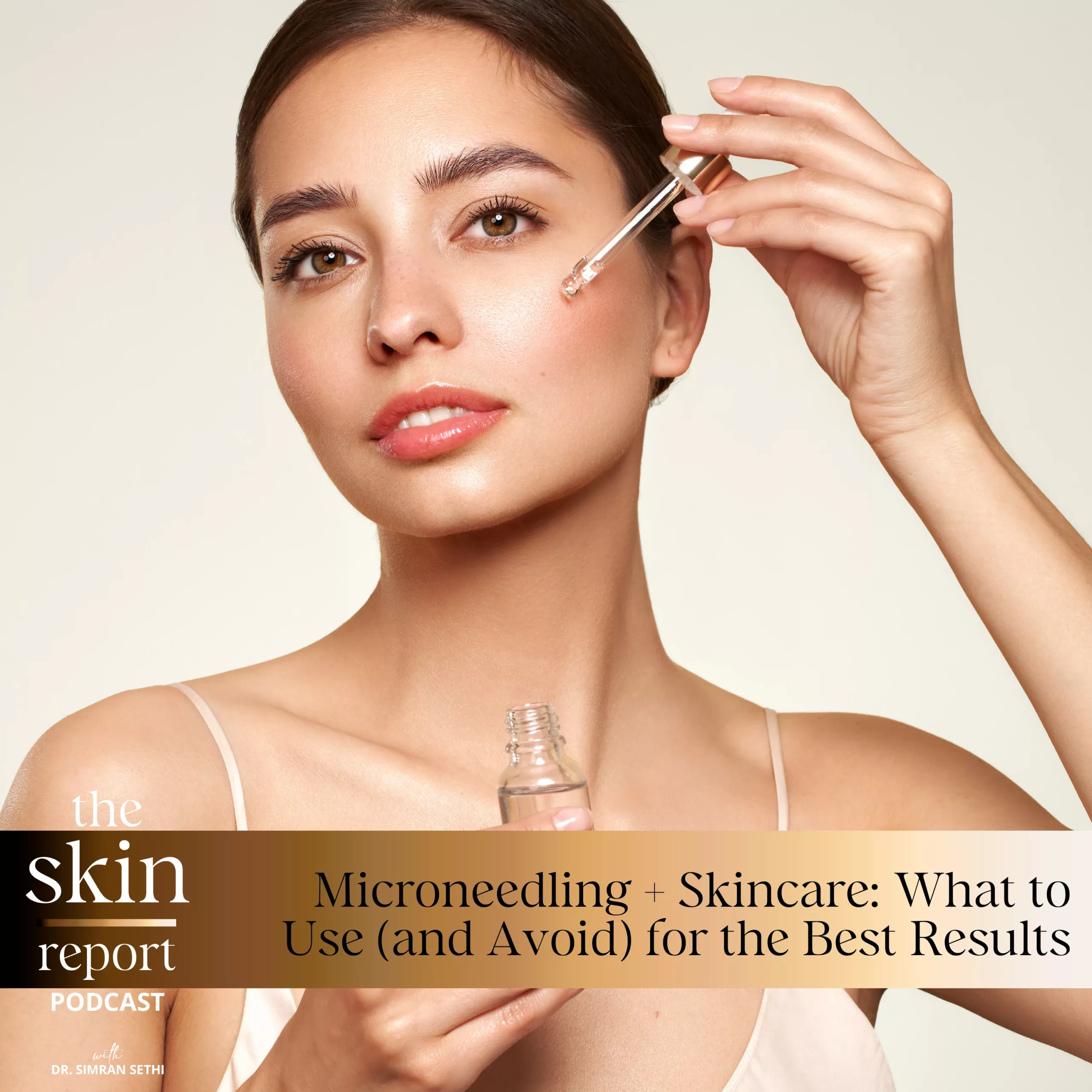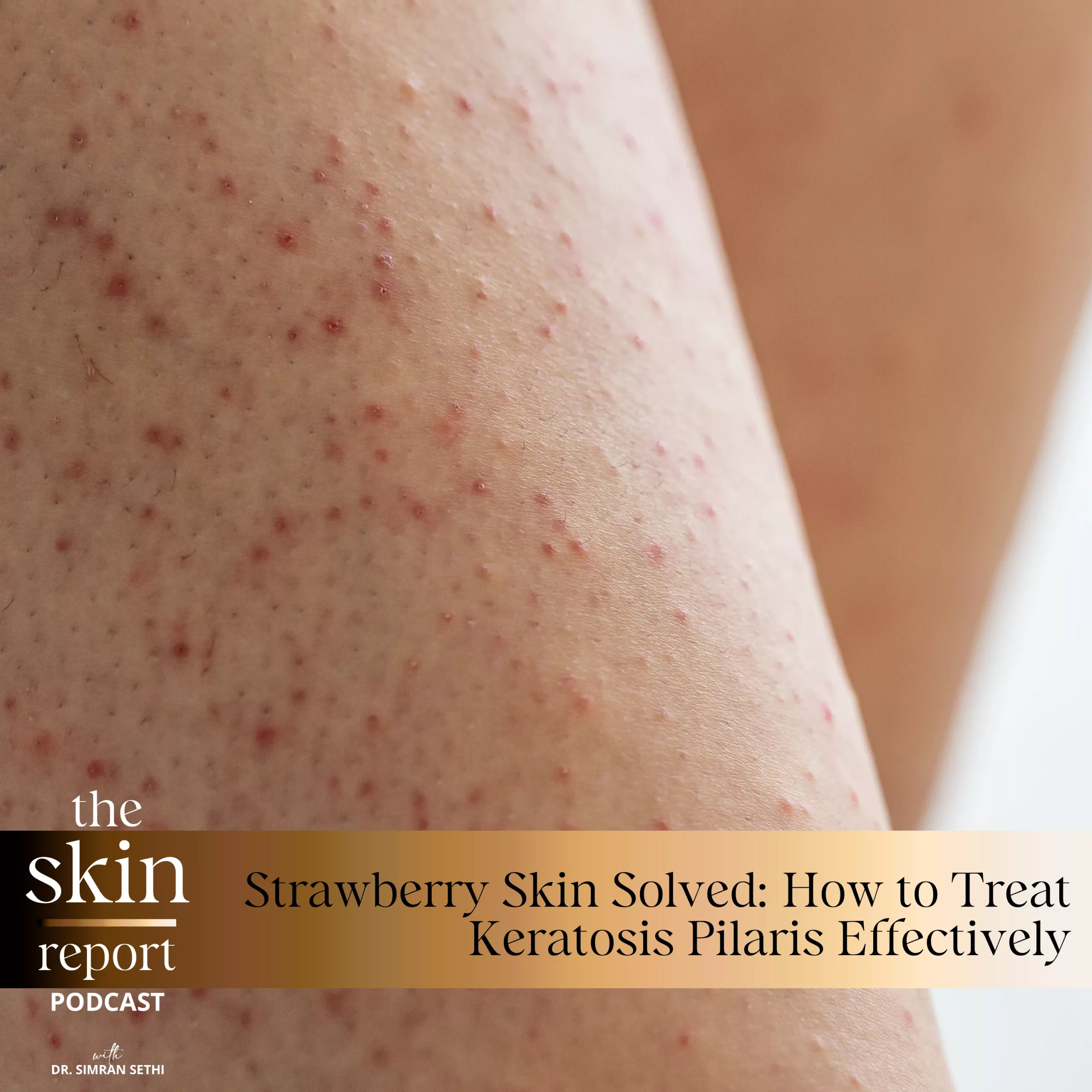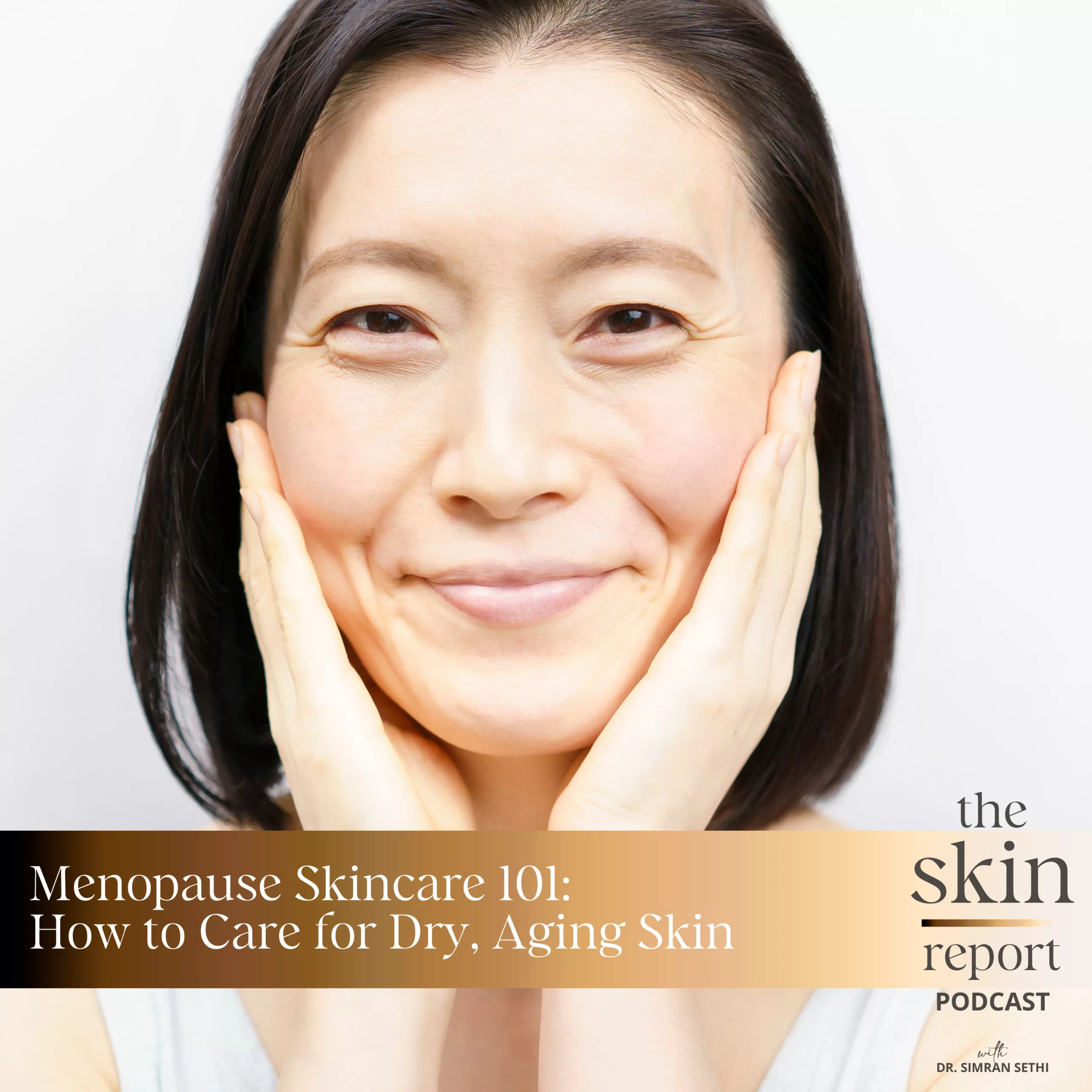We can thank melanin and pigmentation as the primary cause behind human beings’ broad range of skin colors and shades. Women of color are impacted differently due to their melanin, and they require specific care and consideration when treating their skin conditions. But with the beauty industry’s history of harmful skincare trends and products meant to address melanin production, what healthy alternatives exist for women of color to treat their pigmentation concerns?
The Skin Report is a podcast created to educate listeners on how skin care practices can improve skin health for people of every ethnicity. In this episode, host Dr. Simran Sethi explains the biology behind melanin and the harmful ways that the beauty industry worked against melanin in the past with skin bleaching treatments that cause unhealthy side effects. Fortunately, however, there are safe and nourishing ways for women of color to treat dark spots and hyperpigmentation. Tune in to learn healthy tips and tricks to addressing melanin-related skin concerns and appropriately nourish your natural skin tone.
Follow and DM a question for Dr. Sethi to answer on The Skin Report Podcast: RenewMD
Beauty Instagram: https://www.instagram.com/renewmd_beauty/
RenewMD Beauty Medical Spas, California: https://renewmdwellness.com/
- https://www.cnn.com/2022/01/25/world/as-equals-skin-whitening-global-market-explainer-intl-cmd/index.html#:~:text=The%20global%20market%20for%20skin,half%20that%20within%20six%20years.&text=Women%20account%20for%20almost%2080%25%20of%20sales%20worldwide.&text=Creams%20dominate%20the%20market%20and,reach%20%246.6%20billion%20by%202027.
- https://www.un.org/africarenewal/magazine/april-2019-july-2019/paying-high-price-skin-bleaching
- https://www.healio.com/news/dermatology/20210212/dyschromia-dyspigmentation-present-unique-challenges-for-skin-of-color#:~:text=Dyschromia%20is%20a%20change%20in,loss%20or%20increase%20in%20pigmentation.
- https://www.ncbi.nlm.nih.gov/pmc/articles/PMC212702/
- https://renewmdwellness.com/how-computer-screens-and-indoor-lighting-age-skin/
- https://renewmdwellness.com/ask-dr-sethi-skin-lightening/
- https://theconversation.com/women-of-color-spend-more-than-8-billion-on-bleaching-creams-worldwide-every-year-153178#:~:text=The%20World%20Health%20Organization%20warns,The%20practice%20is%20not%20new.
- https://www.vox.com/first-person/2020/6/30/21308257/skin-lightening-colorism-whitening-bleaching
This transcript was exported on May 13, 2022 -view latest version here.
The Skin Report Episode 2
Skin care can sometimes feel overwhelming. Whether it’s finding the right products, ingredients, or treatments, there’s a lot out there, but not always for women of color. That’s why I set out to educate myself and others so that we can all feel beautifulin our skin. Hello, and welcome to The Skin Report. I’m Dr. Simran Sethi, an internal medicine doctor, mom of three, and CEO and founder of Renew MD Medical Spas and Skin by Dr. Simran Sethi. Today I wanted to talk about melanin, what it is and what it does. By understanding melanin, we can better understand skincare for darker skin tones and learn to embrace our color.
Before we delve into melanin, it’s important to first understand the different layers of our skin. We touched on this in our previous episode, when we covered the skin renewal cycle and aging. Today, I want to examine how the different skin layers relate to melanin pigmentation and more. Our skin is composed of three main layers: the epidermis, the dermis and the hypodermis. The epidermis isthe most superficial layer and houses pigment producing cells called melanocytes. As the outermost layer, the epidermis protects our other two layers of skin from the environment and other elements. Beneath the epidermis is the dermis, which is where new skin proteins are produced such as collagen and elastin. The third main layer of skin is called the hypodermis and contains connective tissue and subcutaneous fat. In between the epidermis and the dermis is a layer known as the basement membrane. We’ll discuss the basement membrane when we touch on pigmentation disorders later in this episode.
So, how does melanin fit into this picture? In our epidermis, the outermost layer of skin, melanocytes produce melanin. Melon production is increased by exposure to light heat and inflammation. In general, all skin tones have the same number of pigment producing cells. Yes, you heard that, right. But if all skin types have the same number, how do we get such variety in our shades of skin? So from your palest cousin to your darkest, we all have the same number of pigment producing cells; however, darker skin tones produce more pigment than lighter skin tones. Darker skin tones will always produce more pigment in response to what we call a skin insult. What this means is that when darker skin tones experience acne, sun exposure, or sensitivity to products, the skin will produce more melanin and pigmentation in response. This leads to dark spots in the wake of acne as well as dry skin, leading to micro tears and an uneven skin tone.
If you recall, in our previous episode, the top three most common skin conditions for women of color are acne, dyschromia and atopic dermatitis. According to the Journal of the American Academy of Dermatology, dyschromia is a change in color of the skin, sometimes relating to an irregularity in pigmentation such as loss or increase of melanin. While all skin tones experience these ailments, women of color are especially impacted or impacted in different ways due to all their melanin. Therefore, women of color require specific care and consideration when treating their conditions.
However, this hasn’t always been the case. In fact, for a very long time, the skincare industry worked against melanin. We all want to have radiant glowing skin. There’s nothing wrong with this. However, because of social pressures and biases, many women of color will use bleaching products to lighten their skin and remove dark spots. Starting in the 1950s, bleaching skin became popular as pressure to look whiter became more widespread. Unfortunately, the lighter skin that a person of color had, the easier the life would become. Today, skin bleaching is very much present. 40% of African women bleach their skin overall, with numbers as high as 77% of women in Nigeria. However, and unfortunately, this extends beyond just Africa. In the United States, bleaching creams are actually repackaged as a way to eliminate blemishes and age spots, though they still liken skin.
However, bleach actually aggravates melanocytes, which increases the production of pigment. When excess melanin is produced in the epidermis, it will leak through the basement membrane, the layer of skin separating the epidermis and the dermis. This becomes more problematic as the dermis does not normally house pigment, so when pigment from the epidermis leaks into the dermis, pigment becomes even more resistant to traditional skincare and even medical grade treatments like lasers and microneedling, topics we will cover on later episodes.
So, to summarize, not only does skin bleaching worsen skin issues, it is also dangerous to the person. Listen on to hear the risks of skin bleaching and find out what some safer alternatives are. The World Health Organization states that these bleaching products can cause kidney and liver damage, cancer, neurological problems, and for pregnant women, still birth. In an attempt to help assuage colorism, companies like L’Oreal and Johnson and Johnson have halted their bleaching product production. Overall, the global skin whitening market reach about eight billion in 2020. This could all be its own episode, but the important thing to remember about bleaching is that even if you are tempted, never apply products that have bleach in them, no matter the concentration. It will not work and itis dangerous for your health.So, what can you do for dark spots? First start treating hyperpigmentation as early as possible. We can do this by nourishing the skin cycle, which we discussed in the first episode. Additionally, it’s imperative to protect your skin from inflammation, UV damage, and blue light. Blue light. Yes, your phone may be drying out your skin, but there’s no need to feel alarmed. The amount of blue light emitted from your phone is a fragment of the blue light from the sun. We’ll dive further into this topic on a later episode, but for now you can check out our blog post on the subject. We’ll include a link to the blog post in our show notes.
Products with antioxidants and vitamin C also help to prohibit melanin production, because they do so by fighting oxidative damage that increases melanocyte activity that causes excess pigmentation. And if you’re looking for something more intense, you can also get intravenous injections of antioxidants, glutathione and vitamin C, at any of our medical spas to gradually and safely reduce melanocyte activity. All these alternatives work with your skin renewal cycle, not against it. None of these strategies involve bleaching and aggravating the epidermis and skin cycle that eventually leads to more skininflammation and unfortunately more pigmentation, especially in skin of color. Finally, protection against pigmentation is equally important as working with the skin renewal cycle. Finding a great broad spectrum sunscreen that not only includes UVA and UVB protection like many of them do, but also offers blue light or HEV protection, which, interestingly, many sunscreens don’t. You need to wear your sunscreen daily rain or shine, which is essential in preventing not only pigmentation, but aging in all skintypes.
For women of color, we shouldn’t work against our skin tone or our melanin but rather with it. We want healthy and happy skin so that we can feel healthy, happy, and beautiful. If you’d like to learn more about how to treat your skin type or are simply curious about aesthetic procedures, please subscribe to The Skin Report, so that you know when we release new episodes Next week, we’ll be covering what you should prioritize in your skincare based on your decade. Everyone deserves to be educated, empowered, and radiant, and that begins with your skin. If you have a skincare question, please DM me at RenewMD_Beauty, and I will answer it in our next episode. Thank you for listening.
Transcript by Rev.com


